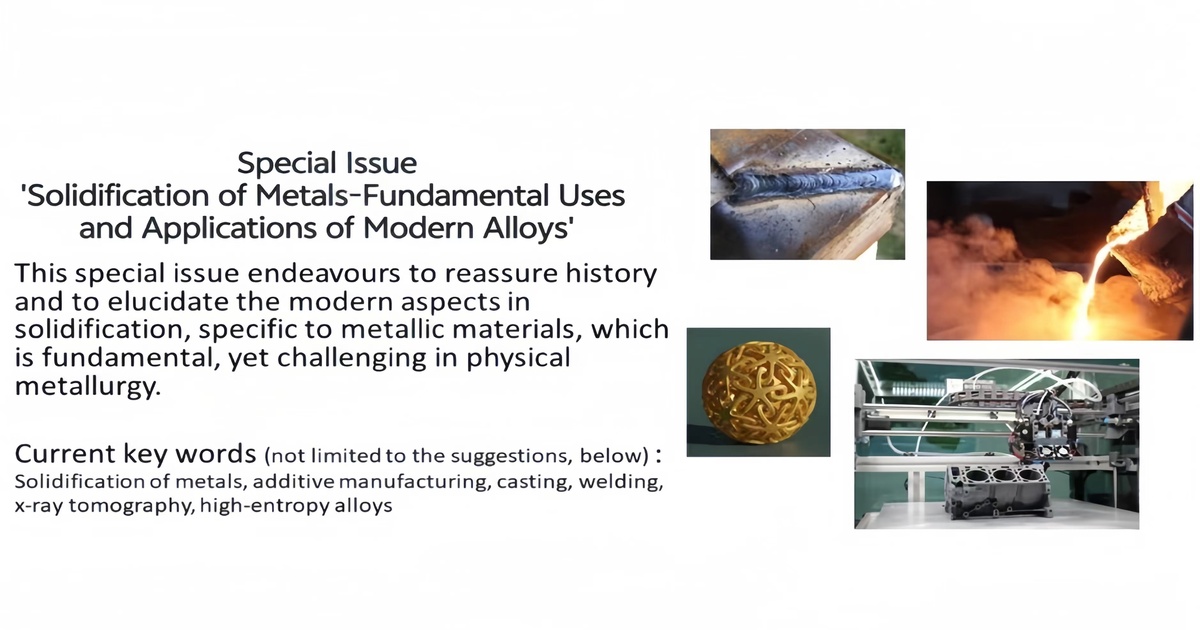Solidification of Metals—Fundamental Uses and Applications of Modern Alloys
A special issue of Materials (ISSN 1996-1944). This special issue belongs to the section "Metals and Alloys".
Deadline for manuscript submissions: 20 September 2024 | Viewed by 79

Special Issue Editors
Interests: phase-field modelling of microstructure evolution; diffusion in multi-component alloys; thermodynamics of metalls and alloys; high temperature materials; alloy development; solidification; phase separation in nano alloys
Special Issue Information
Dear Colleagues,
The solidification of metals and alloys is fundamental in metallurgy, with a long history dating back to the Iron Age. It has been naturally exploited over time for processing and forming metals, and a number of issues have been revealed; hence, solidification has become an important area of research in multiple engineering fields, such as casting and welding. Since the millennium, there has been renewed interest in the solidification of alloys, with its application in additive manufacturing, particularly in 3D printing, gaining significant attention. Further complications arise due to the complexity of the materials involved, which are a blend of elements from a broad range within the periodic table, and the technical complexity caused by the fine and multiple heat inputs. Consequently, the studies also involve solid-state problems. However, thanks to the technical advancements in testing and analysis, significant development has been made towards understanding these problems. This Special Issue encompasses the historical significance of the solidification of metals, as well as state-of-the-art processing techniques and research using modern alloys, combined with advanced analytical techniques and computational theories and predictions.
Dr. Nils Warnken
Dr. Hiroto Kitaguchi
Guest Editors
Manuscript Submission Information
Manuscripts should be submitted online at www.mdpi.com by registering and logging in to this website. Once you are registered, click here to go to the submission form. Manuscripts can be submitted until the deadline. All submissions that pass pre-check are peer-reviewed. Accepted papers will be published continuously in the journal (as soon as accepted) and will be listed together on the special issue website. Research articles, review articles as well as short communications are invited. For planned papers, a title and short abstract (about 100 words) can be sent to the Editorial Office for announcement on this website.
Submitted manuscripts should not have been published previously, nor be under consideration for publication elsewhere (except conference proceedings papers). All manuscripts are thoroughly refereed through a single-blind peer-review process. A guide for authors and other relevant information for submission of manuscripts is available on the Instructions for Authors page. Materials is an international peer-reviewed open access semimonthly journal published by MDPI.
Please visit the Instructions for Authors page before submitting a manuscript. The Article Processing Charge (APC) for publication in this open access journal is 2600 CHF (Swiss Francs). Submitted papers should be well formatted and use good English. Authors may use MDPI's English editing service prior to publication or during author revisions.
Keywords
- solidification
- additive manufacturing
- welding
- solidification defects
- superalloys
- high-entropy alloys
- computational modelling
- electron microscopy
- tomography






